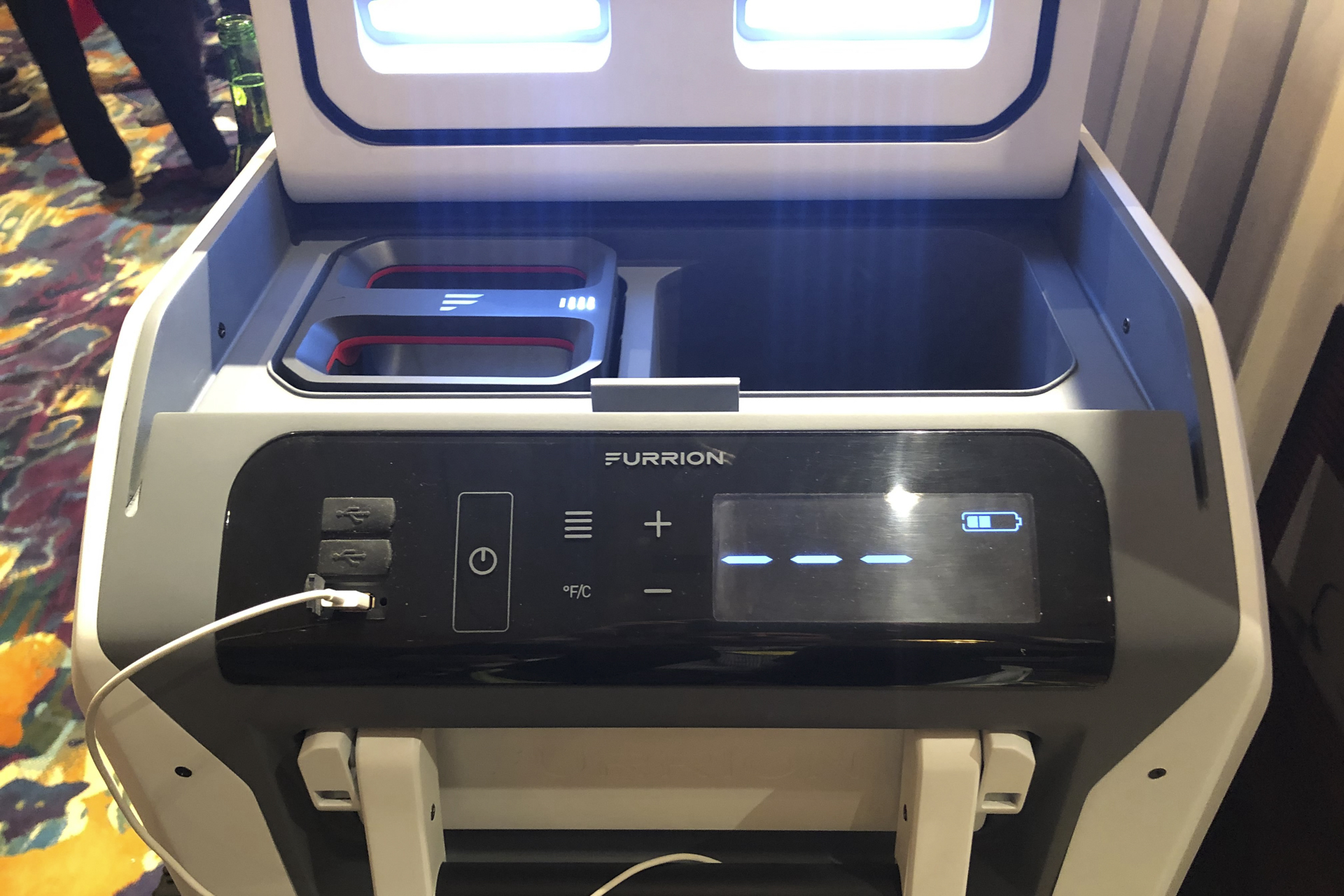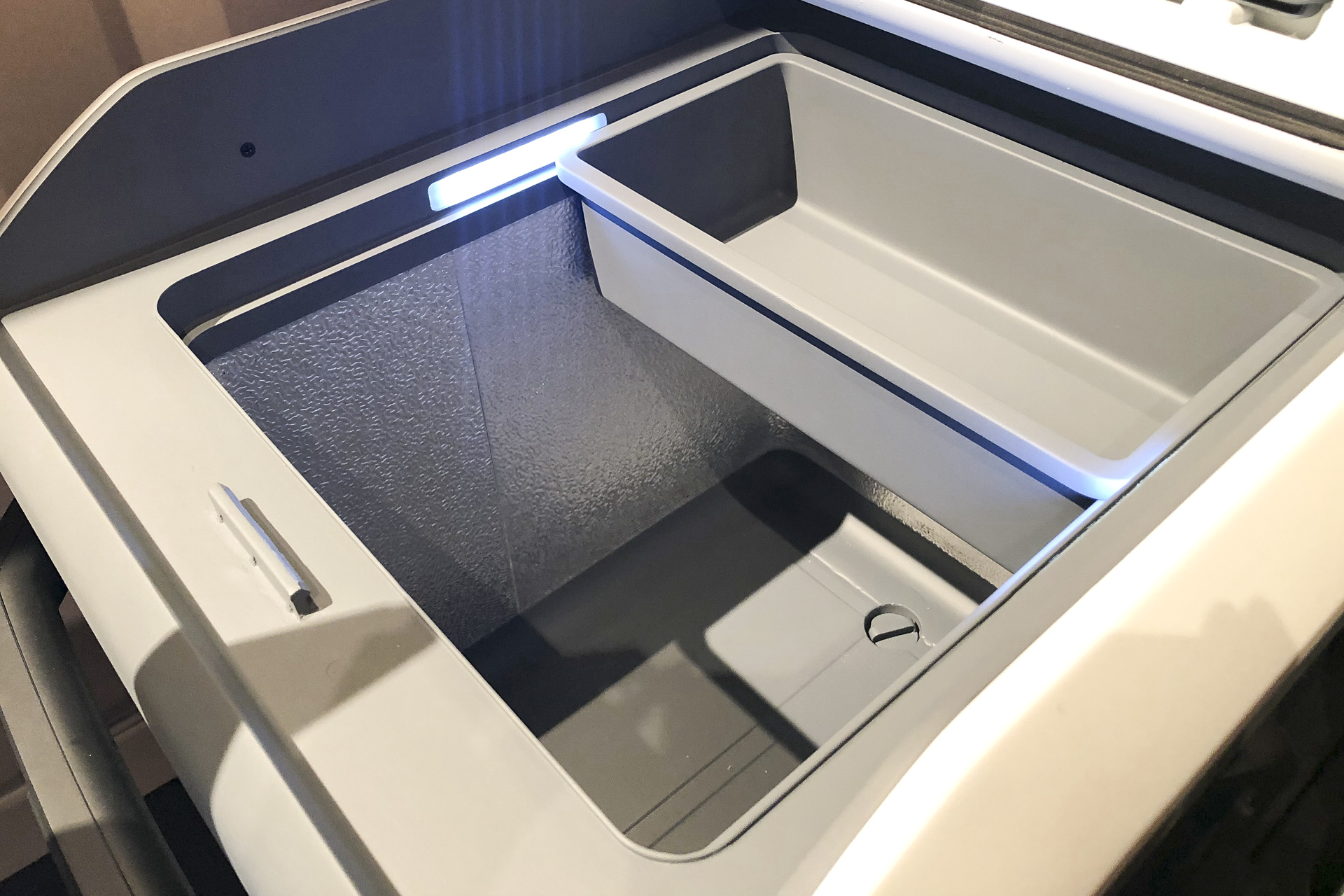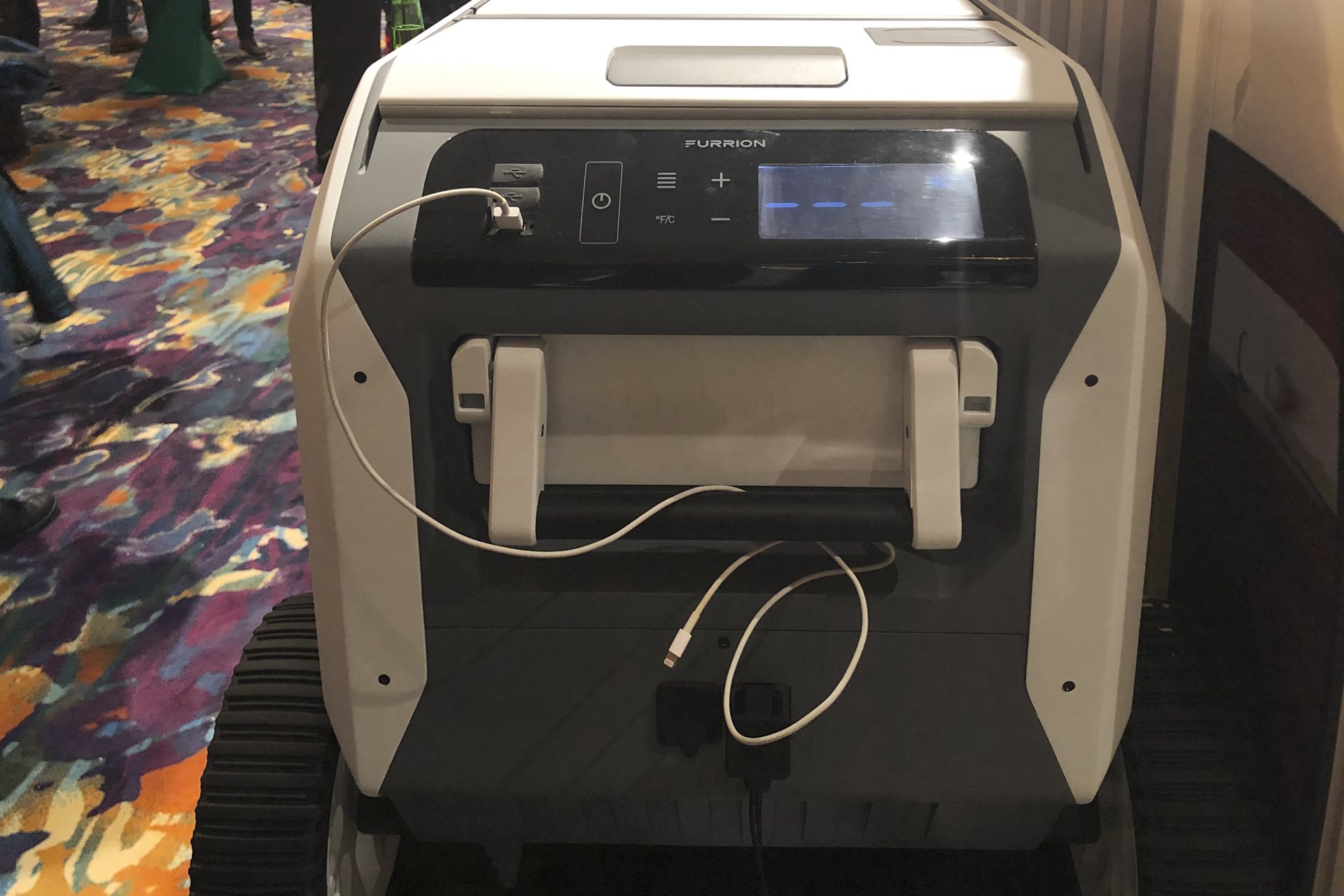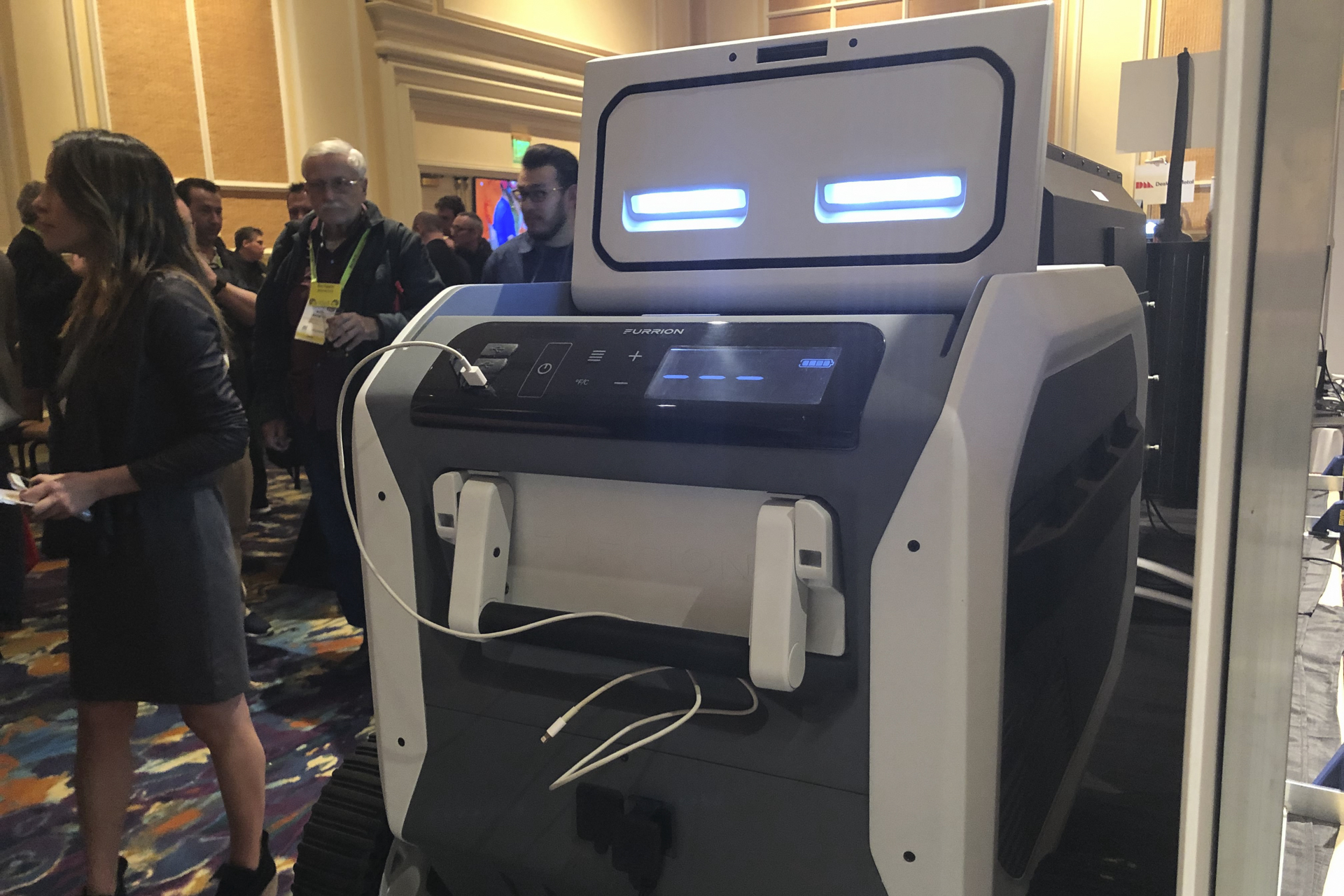Americans love coolers. They keep our beer cold, our meat fresh, and give us somewhere to plant our butts around the campfire that isn’t a soggy log. No wonder we lined up to throw our money at the electrified Coolest Cooler, only to cringe as it became the poster child for overly ambitious Kickstarter failures.
More CES 2019 coverage
- This futuristic autonomous pod hotel drives you around as you sleep
- AirSelfie makes a course correction at CES 2019 with 3 new selfie drones
- Sphero’s Specdrums let you drum up a symphony of sound with colors
- Food 2.0: Impossible Foods is back with a bloody new non-beef burger
But fear not, lovers of cold outdoor beer. CES 2019 has brought a new breed of electrified cooler, and this one skips the gimmicky margarita blender. Furrion, the darling of glamping RVers everywhere, has a cooler that promises to eliminate ice runs forever.
The Rova, as Furrion calls its contraption, looks like a cooler from the Halo universe as built by NASA. It has perforated Mars rover wheels, edgy angles, and LEDs everywhere. More importantly, it has a brick-sized lithium-ion battery that promises to keep beverages cold for up to 10 days straight.
While electric refrigerators from the likes of Dometic are common in vans and RVs with deep-cycle lead-acid battery banks, venturing away from a vehicle has always involved a trip to the gas station to dig bags of ice out of a padlocked ice locker. Furrion claims the Rova will put an end to that routine by keeping beverages cold for a week straight, or up to 10 days if you bother to load it with ice.
Most inexpensive car fridges rely on inexpensive and inefficient Peltier coolers, but the Rova uses a built-in compressor, just like your home refrigerator. Naturally, that requires a beast of a battery, so Furrion’s Epod cells deliver 400 watts. The same cells will also work in an upcoming line of Furrion outdoor appliances. Furrion says they will run a 22-inch TV for eight hours, recharge your phone 22 times, or power LED lighting for 130 hours.
The battery lives in one side of the cooler, beside a well for dry storage, and the beverages live in the other side. Though the cold side of the cooler measures only 1.3 cubic feet, or about 37 liters, the lack of ice means more of that space is usable for food and beverage. On the outside, the Rova sports three USB ports for charging gadgets, a wireless Qi charging pad for compatible phones, and a 110v outlet for ordinary appliances. An accessory rack on the side of the cooler lets you tack on cupholders, speakers, and other accessories.
Like all of Furrion’s luxury-focused gear, the Rova packs a luxury price tag. It will retail for around $700 when it launches later this year, and you can expect to drop another $300 on the required Epod battery. A bundle should cut the combined cost a bit south of $1,000, but that still buys a lot of ice for your trusty Coleman cooler. Of course, Yeti has made $500 coolers the new norm, so maybe the world is ready to pay a premium to abandon ice forever.







